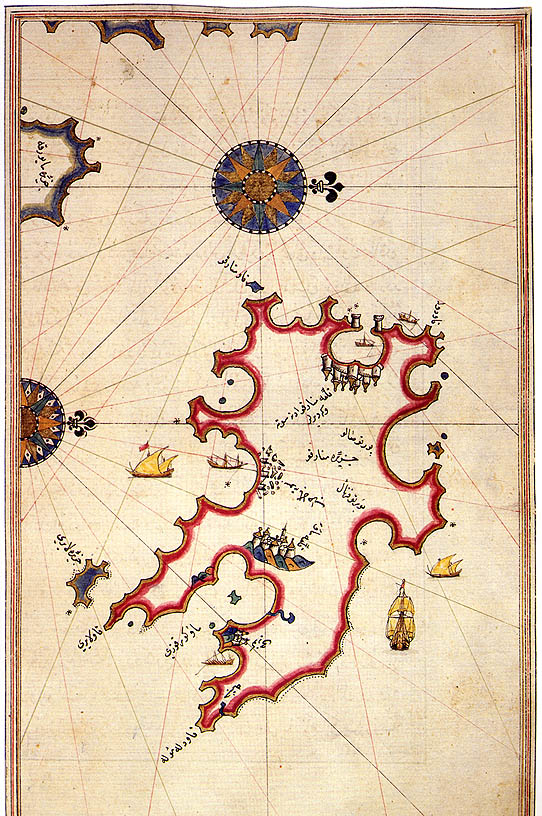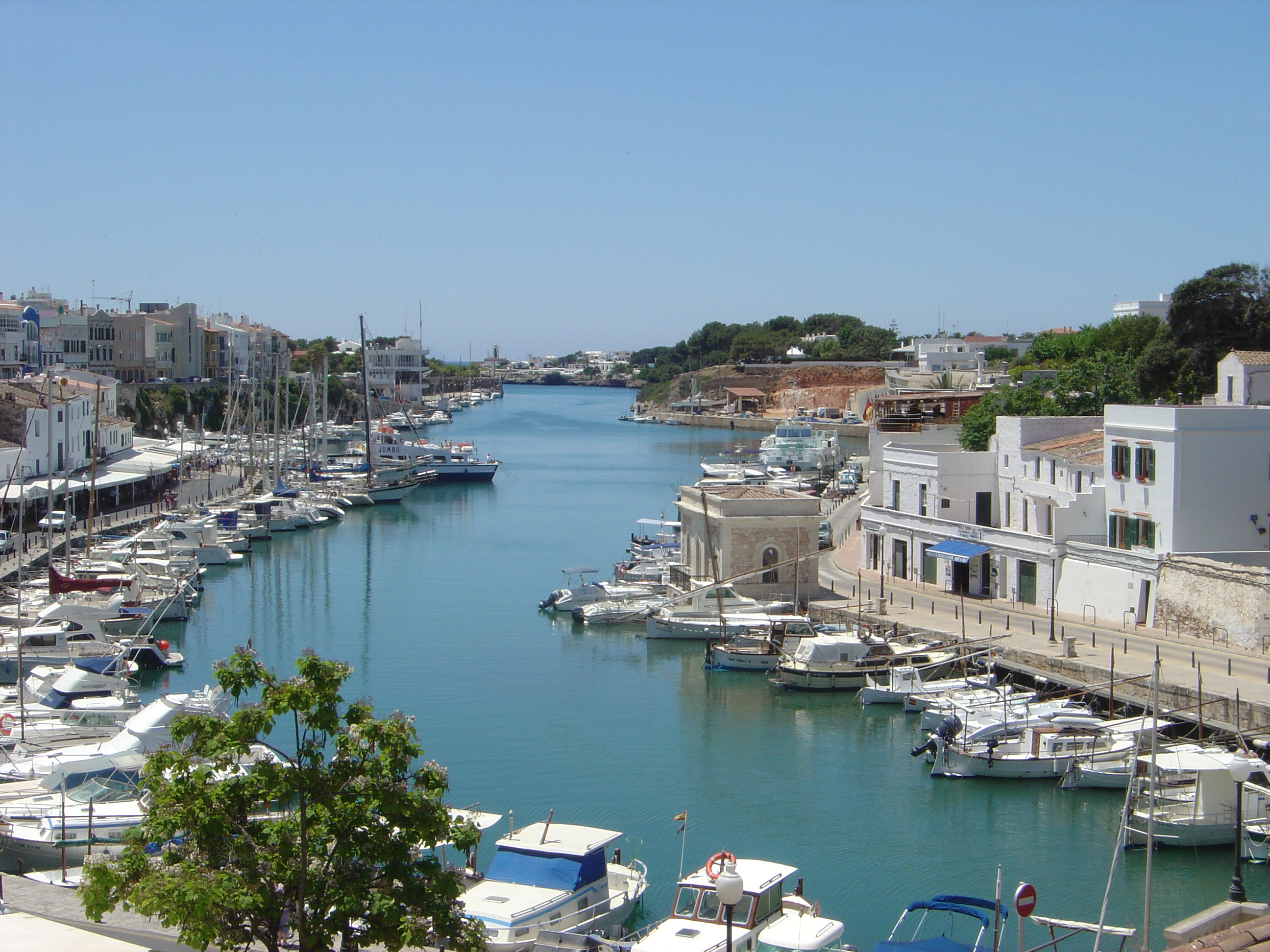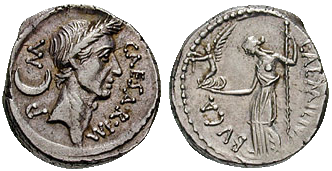|
Minorca
Menorca or Minorca (from la, Insula Minor, , smaller island, later ''Minorica'') is one of the Balearic Islands located in the Mediterranean Sea belonging to Spain. Its name derives from its size, contrasting it with nearby Majorca. Its capital is Mahón ( ca, Maó), situated on the island's eastern end, although Menorca is not a province and forms a political union with the other islands in the archipelago. Ciutadella and Mahon are the main ports and largest towns. The port of Mahon is the second biggest natural port in the world. Menorca has a population of approximately 93,397 (at 1 January 2019). It is located 39°47' to 40°00'N, 3°52' to 4°24'E. Its highest point, called El Toro (from Catalan "''turó''" meaning ''hill''), is above sea level. History The island is known for its collection of megalithic stone monuments: ''navetes'', ''taules'' and ''talaiots'', which indicate very early prehistoric human activity. Some of the earliest culture on Menorca was infl ... [...More Info...] [...Related Items...] OR: [Wikipedia] [Google] [Baidu] |
Invasion Of Minorca
The island of Menorca in the Mediterranean Sea has been invaded on numerous occasions. The first recorded invasion occurred in 252 BC, when the Carthaginians arrived. The name of the island's chief city, Mahón (now Maó), appears to derive from the name of the Punic leader Mago Barca. The name of the island is of Latin origin, and dates from after the Roman conquest, led by Quintus Caecilius Metellus in 123 BC, during a campaign which earned him the agnomen ''Balearicus''. The island was briefly subsumed under the Vandal kingdom of Africa around 427, but it was eventually reconquered by the Romans and incorporated in the Byzantine Empire. It was an obscure province increasingly outside the sphere of Byzantine influence for the next four centuries. Around 859 a Viking incursion destroyed or damaged many Byzantine churches. In 903 the island was invaded by the Emirate of Córdoba, resulting in the introduction of Islam and renewed contacts with the Iberian peninsula. The ''taif ... [...More Info...] [...Related Items...] OR: [Wikipedia] [Google] [Baidu] |
Flag Of Menorca
The flag of Menorca was adopted on 14 November 1983. The flag depicts nine alternating horizontal bands of yellow and red emblazoned with the coat of arms of the ''Universitat General'' offset towards the hoist in the centre. History On 8 August 1983 the regional council of Menorca established a commission to research symbols related to the island for usage on a flag. The commission concluded that there had never been an official flag of Menorca but that that island heavily relied on symbols of the Kingdom of Aragon for identification. The earliest use of the Aragonese flag, the Senyera The Senyera (; meaning "pennon", "standard", "banner", "ensign", or, more generically, "flag" in Catalan language, Catalan) is a vexillological symbol based on the coat of arms of the Crown of Aragon, which consists of four red stripes on a yel ..., was dated back to 1232. The colours were officially adopted by the island following the defeat of the Moors by Alfonso III in 1287. The Coa ... [...More Info...] [...Related Items...] OR: [Wikipedia] [Google] [Baidu] |
Balearic Islands
The Balearic Islands ( ca, Illes Balears ; es, Islas Baleares or ) are an archipelago in the western Mediterranean Sea, near the eastern coast of the Iberian Peninsula. The archipelago forms a Provinces of Spain, province and Autonomous communities of Spain, autonomous community of Spain, with Palma de Mallorca being its capital and largest city. Formerly part of the Kingdom of Majorca, Kingdom of Mallorca, the islands were made a province in the 19th century provincial division, which in 1983 received a Statute of Autonomy of the Balearic Islands, Statute of Autonomy. In its later reform of 2007, the Statute designates the Balearic Islands as one of the ''nationalities and regions of Spain, nationalities'' of Spain. The official Languages of Spain, languages of the Balearic Islands are Catalan language, Catalan and Spanish language, Spanish. The archipelago islands are further grouped in western Pityusic Islands, Pytiuses (the largest being Ibiza and Formentera), and east ... [...More Info...] [...Related Items...] OR: [Wikipedia] [Google] [Baidu] |
Mahón
Mahón (), officially Maó (), and also written as Mahon or Port Mahon in English, is the capital and second largest city of Menorca. The city is located on the eastern coast of the island, which is part of the archipelago and autonomous community of the Balearic Islands. Mahón has one of the longest natural harbours in the world: long and up to wide. The water is deep but remains mostly clear due to the port's enclosed nature. Mayonnaise is considered to have originated in Mahón. Its population in 2021 was estimated to be 29,125. History The name's origin is attributed to the Carthaginian general Mago Barca, brother to Hannibal Hannibal (; xpu, 𐤇𐤍𐤁𐤏𐤋, ''Ḥannibaʿl''; 247 – between 183 and 181 BC) was a Carthaginian general and statesman who commanded the forces of Carthage in their battle against the Roman Republic during the Second Pu ..., who is thought to have taken refuge there in 205 BC. After the fall of the Western Roman ... [...More Info...] [...Related Items...] OR: [Wikipedia] [Google] [Baidu] |
Majorca
Mallorca, or Majorca, is the largest island in the Balearic Islands, which are part of Spain and located in the Mediterranean. The capital of the island, Palma, is also the capital of the autonomous community of the Balearic Islands. The Balearic Islands have been an autonomous region of Spain since 1983. There are two small islands off the coast of Mallorca: Cabrera (southeast of Palma) and Dragonera (west of Palma). The anthem of Mallorca is "La Balanguera". Like the other Balearic Islands of Menorca, Ibiza, and Formentera, the island is an extremely popular holiday destination, particularly for tourists from the Netherlands, Germany and the United Kingdom. The international airport, Palma de Mallorca Airport, is one of the busiest in Spain; it was used by 28 million passengers in 2017, with use increasing every year since 2012. Etymology The name derives from Classical Latin ''insula maior'', "larger island". Later, in Medieval Latin, this became ''Maiorca'', "the large ... [...More Info...] [...Related Items...] OR: [Wikipedia] [Google] [Baidu] |
Ciutadella De Menorca
Ciutadella de Menorca () or simply Ciutadella is a town and a municipality in the western end of Menorca, one of the Balearic Islands (Spain). It is one of the two primary cities in the island, along with Maó. History It was founded by the Carthaginians, and became the seat of a bishop in the 4th century. After being governed by the Moors under the names of ''Medīna el Jezīra'' ( ar, مدينة الجزيرة) and ''Medīna Menūrqa'' (مدينة منورقة) for several centuries, Ciutadella was recaptured during the reconquista by men serving Alfonso III and became part of the Crown of Aragon. During the Middle Ages, it became an important trading center. On 9 July 1558, the Turks under Piyale Pasha and Turgut Reis with a powerful Turkish Armada of 140 ships and 15,000 soldiers, put the town under siege for eight days entered and decimated the town. The town was defended by only a few hundred men. All of Ciutadella's 3,099 inhabitants who survived the siege were taken ... [...More Info...] [...Related Items...] OR: [Wikipedia] [Google] [Baidu] |
Augustus
Caesar Augustus (born Gaius Octavius; 23 September 63 BC – 19 August AD 14), also known as Octavian, was the first Roman emperor; he reigned from 27 BC until his death in AD 14. He is known for being the founder of the Roman Principate, which is the first phase of the Roman Empire, and Augustus is considered one of the greatest leaders in human history. The reign of Augustus initiated an imperial cult as well as an era associated with imperial peace, the '' Pax Romana'' or '' Pax Augusta''. The Roman world was largely free from large-scale conflict for more than two centuries despite continuous wars of imperial expansion on the empire's frontiers and the year-long civil war known as the " Year of the Four Emperors" over the imperial succession. Originally named Gaius Octavius, he was born into an old and wealthy equestrian branch of the plebeian ''gens'' Octavia. His maternal great-uncle Julius Caesar was assassinated in 44 BC, and Octavius was named in Caes ... [...More Info...] [...Related Items...] OR: [Wikipedia] [Google] [Baidu] |
Tarraconensis
Hispania Tarraconensis was one of three Roman provinces in Hispania. It encompassed much of the northern, eastern and central territories of modern Spain along with modern northern Portugal. Southern Spain, the region now called Andalusia was the province of Hispania Baetica. On the Atlantic west lay the province of Lusitania, partially coincident with modern-day Portugal. History Establishment The Phoenicians and Carthaginians colonised the Mediterranean coast of Iberia in the 8th to 6th centuries BC. The Greeks later also established colonies along the coast. The Romans arrived in the 2nd century BC during the Second Punic War. The province Hispania Citerior Tarraconensis was established in the reign of Augustus as the direct successor of the Roman Republican province of Hispania Citerior ('Nearer Spain'), which had been ruled by a propraetor.Livy, ''The History of Rome'', 41.8. The roots of the Augustan reorganisation of Hispania are found in Pompey the Great's division of H ... [...More Info...] [...Related Items...] OR: [Wikipedia] [Google] [Baidu] |
Gymnesian Islands
The Gymnesians ( ca, Illes Gimnèsies , es, Gimnesias ), or Gymnesic Islands ( ca, Illes Gimnèsiques), is a collective name given to the two largest (and easternmost) Balearic Islands, Mallorca and Menorca, distinguishing them from the Pityuses ( ca, Illes Pitiüses; es, Pitiusas), or Pine Islands, Ibiza and Formentera. Etymology The word ''Gymnesian'' (from the gr, γυμνήτες ') means "naked". The Greeks called the islands Gymnesiae ( grc, Γυμνήσιαι). According to Diodorus Siculus the Greeks called the islands like this because the inhabitants were naked during the summer time. The Ancient Greeks recruited the local inhabitants of these islands, the Talaiotics, as slingers. According to some researchers, this does not mean that they fought naked, but that they used much lighter armament than the hoplites. Name usage Later the Phoenicians referred to both Mallorca and Menorca as the ''Baliarides''. After the whole archipelago (the ''Pityuses'' and ''Gymnes ... [...More Info...] [...Related Items...] OR: [Wikipedia] [Google] [Baidu] |
Hispania Citerior
Hispania Citerior (English: "Hither Iberia", or "Nearer Iberia") was a Roman province in Hispania during the Roman Republic. It was on the eastern coast of Iberia down to the town of Cartago Nova, today's Cartagena in the autonomous community of Murcia, Spain. It roughly covered today's Spanish autonomous communities of Catalonia and Valencia. Further south was the Roman province of Hispania Ulterior ("Further Iberia"), named as such because it was further away from Rome. The two provinces were established in 197 BC, four years after the end of the Second Punic War (218–201 BC). During this war Scipio Africanus defeated the Carthaginians at the Battle of Ilipa (near Seville) in 206 BC. This led to the Romans taking over the Carthaginian possessions in southern Spain and on the east coast up to the River Ebro. Several governors of Hispania Citerior commanded wars against the Celtiberians who lived to the west of this province. In the late first century BC Augustus reorganised t ... [...More Info...] [...Related Items...] OR: [Wikipedia] [Google] [Baidu] |



